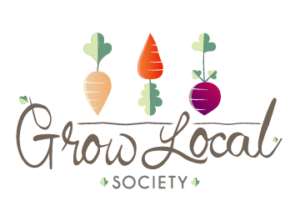 British Columbia has over 800 blueberry growers cultivating 28,000 acres that yield approximately 120 million pounds a year. British Columbia is home to one of the largest highbush blueberry-growing regions in the world, helping Canada rank as the third highest producing country. The United States is the largest grower of blueberries. According to the Ag Marketing Resource Center at Iowa State University more than 473.3 million pounds of cultivated blueberries were harvested in 2012 with 60 percent sold as fresh blueberries.
British Columbia has over 800 blueberry growers cultivating 28,000 acres that yield approximately 120 million pounds a year. British Columbia is home to one of the largest highbush blueberry-growing regions in the world, helping Canada rank as the third highest producing country. The United States is the largest grower of blueberries. According to the Ag Marketing Resource Center at Iowa State University more than 473.3 million pounds of cultivated blueberries were harvested in 2012 with 60 percent sold as fresh blueberries.
“High bush blueberries (Vaccinium corymbosum) are also known as “cultivated” blueberries. These berries grow on bushes that can be more than two meters high. High bush blueberries are harvested earlier, are generally larger, and are less perishable than the low bush variety which makes them highly suitable for shipping to retail markets. The majority of high bush blueberries in Canada are produced in British Columbia.” BC produces most of Canada’s high bush blueberries, with low bush blueberries predominantly grown in the eastern provinces.
Blueberries rank very high in antioxidant activity according to a number research studies. From the Dieticians of Canada: “Antioxidants provide a protective coating for your body’s cells to prevent damage caused by pollutants, smoke, unhealthy diets and the normal aging process.” Some of the benefits of antioxidants include the slowing of the aging process, a reduction of cell damage that can lead to cancer, cardiovascular disease and loss of brain function. Blueberries also contain condensed tannins that help prevent urinary tract infections, and anthyocyanin-a natural compound linked to reducing eyestrain. The BC Blueberry Council, where the catchy title of the blog was borrowed, has several studies cited on their web site.
Because of the abundance of blueberries in the Lower Mainland, farmers are looking for innovative ways to add value to what is a fairly low-margin crop that takes years of investment before bearing fruit. There are several farm-based blueberry processors that have diversified into a range of value-added products including juice and fruit wines. Bremner Foods produces high quality fruit juice on its farm in Delta using blueberries grown on site as well as other local juices from raspberries and cranberries. Because of the appeal of the anti-oxidant properties of their juices, they have made in-roads into the Asian market in addition to their presence on local retail shelves. They recently expanded into fruit wines and have a retail outlet in a heritage barn on their farm.
Cal-San Farms in Richmond is another example of a farm diversifying into frozen berries, fruit wine, and an innovative technology that produces their high-value, dried blueberry products. The product can be used as an ingredient in snack foods, cereals, energy bars, and baked goods. CAL-SAN Enterprises Ltd. has over 200 acres in production, along with a new 30,000 square foot facility capable of processing up to 7 million pounds of fruit annually.
If you are a blueberry lover there is no better time than now to buy. You can buy a year-round supply and simply bag the berries in large zip-lock bags. You don’t need to wash them, just take them out of your freezer and rinse them under the tap before eating. You can learn more about the different varieties and their availability from the Ministry of Agriculture web site. Drop by the market this Sunday for our Blueberry Pancake Breakfast and pick up some recipes supplied by the BC Blueberry Council.
Nutritional Facts |
|
| Serving Size: 1 cup blueberries (140g) | |
| Calories 80 | Calories from Fat 0 |
| % Daily Value* | |
| Total Fat0g | 0% |
| Saturated Fat0g | 0% |
| Cholesterol0mg | 0% |
| Sodium 0mg | 0% |
| Total Carbohydrate19g | 5% |
| Dietary Fibre 5g | 20% |
| Sugars 9g | |
| Protein1g | |
| Vitamin A 0% | Vitamin C 15% |
| Calcium 0% | Iron 0% |
| *Percent Daily Values are based on a 2,000-calorie diet. | |
